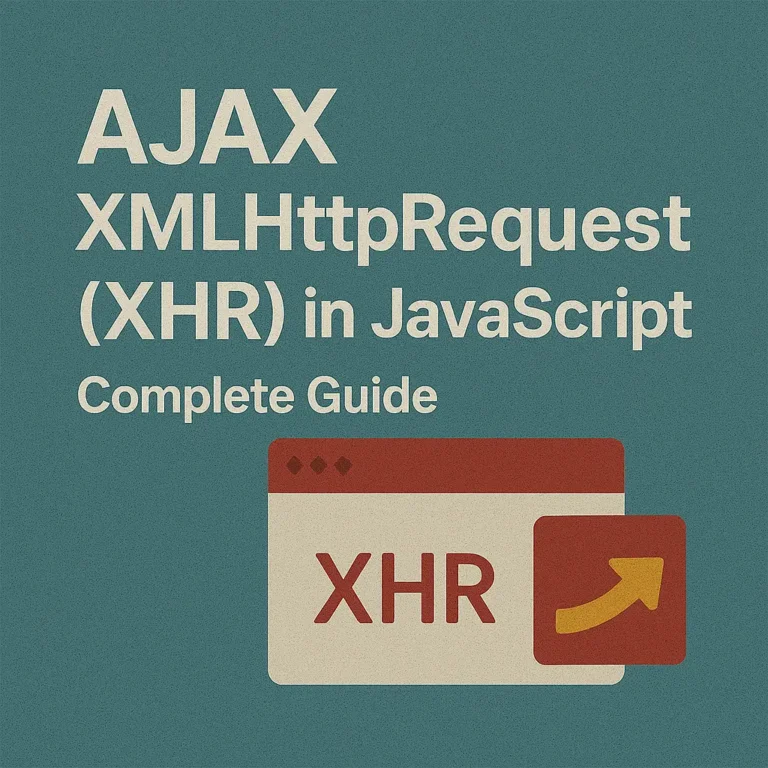Introduction
In today’s dynamic web applications, real-time updates and seamless user experiences are crucial. AJAX (Asynchronous JavaScript and XML) has revolutionized how web pages interact with servers without reloading the entire page. Among its techniques, AJAX polling and long polling stand out for enabling real-time updates. In this article, we’ll delve into these methods, their implementations, and the pros and cons they entail.
AJAX Polling
AJAX polling is a straightforward method where the client periodically sends requests to the server at predefined intervals to check for updates. Let’s illustrate this with a simple example:
function pollForUpdates() {
setInterval(function() {
$.ajax({
url: 'check_updates.php',
type: 'GET',
success: function(data) {
// Process data
}
});
}, 5000); // Poll every 5 seconds
}
In this code snippet, pollForUpdates() sends a request to ‘check_updates.php’ every 5 seconds. Upon receiving a response, the client processes the data accordingly.
Long Polling
Long polling is a variation of AJAX polling where the client sends a request to the server, and the server keeps the connection open until new data is available or a timeout occurs. Let’s see how it’s implemented:
function longPollForUpdates() {
$.ajax({
url: 'long_poll.php',
type: 'GET',
success: function(data) {
// Process data
longPollForUpdates(); // Initiate next long poll
},
timeout: 30000 // Timeout after 30 seconds
});
}
In this example, longPollForUpdates() sends a request to ‘long_poll.php’, and the server holds the connection open until new data is available or until a timeout of 30 seconds occurs.
Pros and Cons
AJAX Polling:
Pros:
Simplicity: AJAX polling is easy to implement and understand, making it suitable for simple applications.
Browser Compatibility: Works across all browsers without compatibility issues.
Predictable: Polling intervals are predefined, allowing for predictable communication between client and server.
Cons:
Network Traffic: Continuously sending requests at regular intervals can lead to increased network traffic and server load, especially in scenarios with frequent updates.
Latency: Updates may not be immediate, depending on the polling interval, leading to latency issues in real-time applications.
Battery Drain: On mobile devices, frequent polling can drain battery life due to constant network activity.
Long Polling:
Pros:
Real-time Updates: Long polling allows for near real-time updates as the server holds connections open until new data is available.
Reduced Latency: Compared to AJAX polling, long polling reduces latency as updates are delivered immediately upon availability.
Efficiency: Long polling reduces unnecessary network traffic and server load by only sending updates when available.
Cons:
Complexity: Long polling implementations can be more complex compared to AJAX polling, requiring handling of timeouts and connection management.
Resource Consumption: Keeping connections open for extended periods can consume server resources, potentially leading to scalability issues.
Potential for Timeout: Long polling introduces the risk of timeouts if the connection is terminated prematurely, requiring robust error handling.
Conclusion
AJAX polling and long polling are essential techniques for achieving real-time updates in web applications. While AJAX polling is simple and widely supported, long polling offers reduced latency and efficient resource usage at the cost of increased complexity. Understanding the pros and cons of each method is crucial for selecting the most suitable approach based on the requirements of your application. Whether it’s the simplicity of AJAX polling or the real-time capabilities of long polling, mastering these techniques empowers developers to create responsive and engaging web applications.
By integrating these techniques judiciously, developers can strike a balance between real-time updates and efficient resource utilization, thereby enhancing the user experience while ensuring the scalability and performance of their applications.






